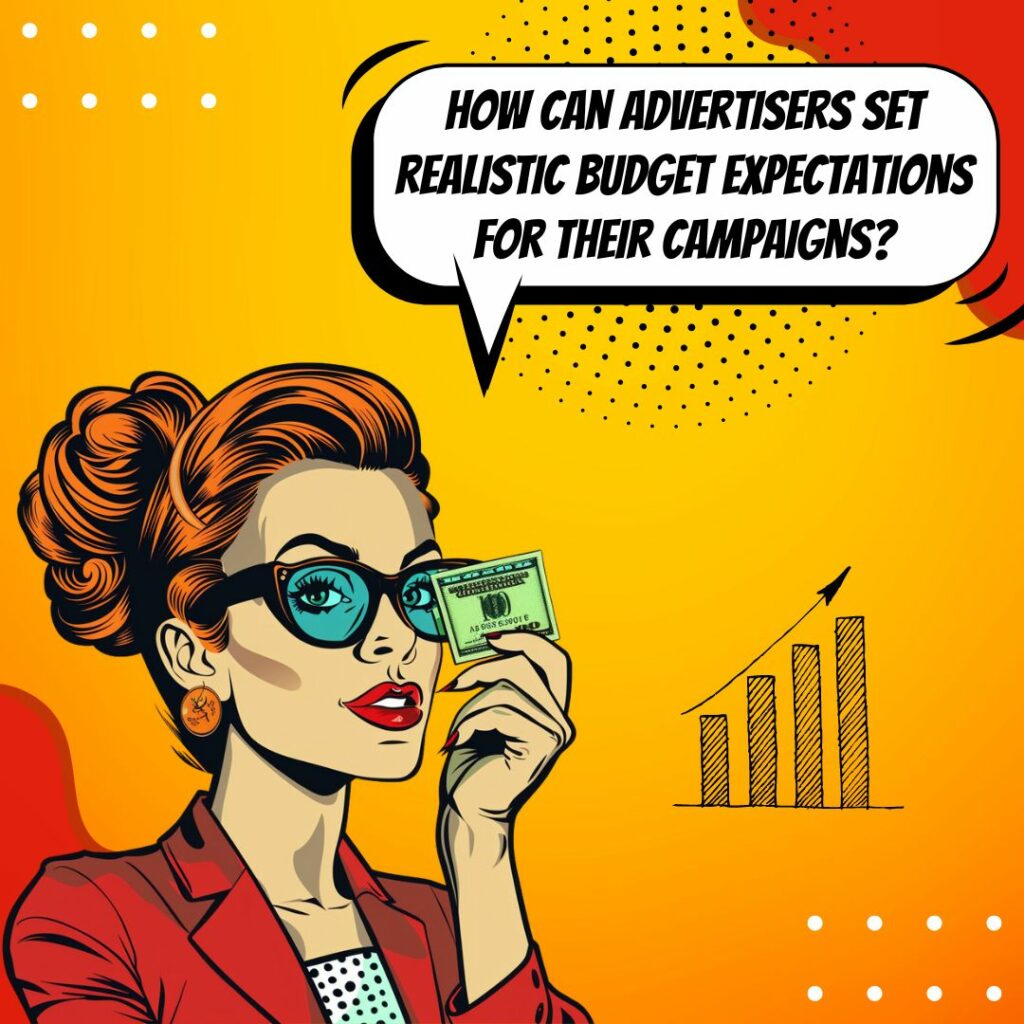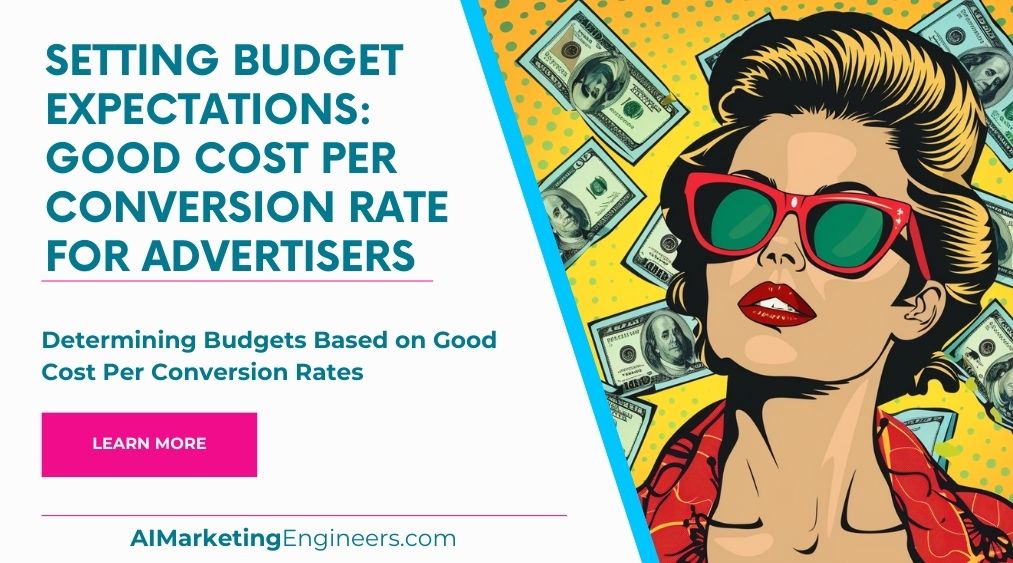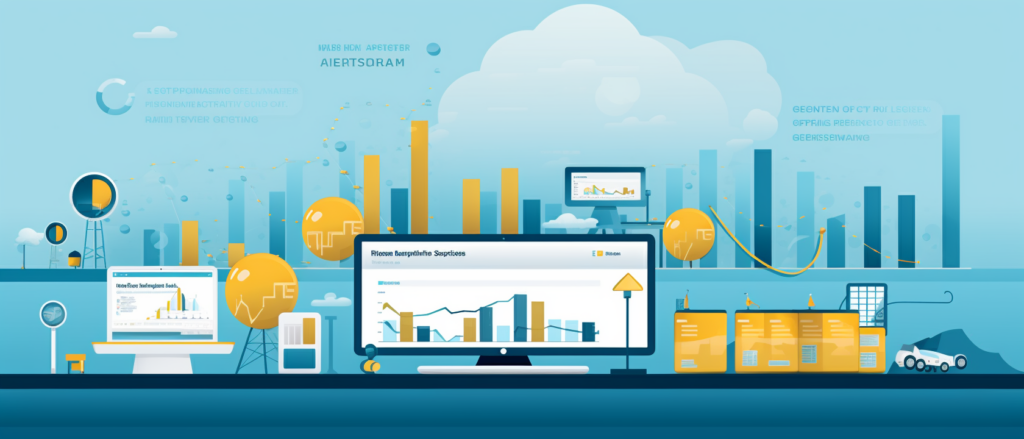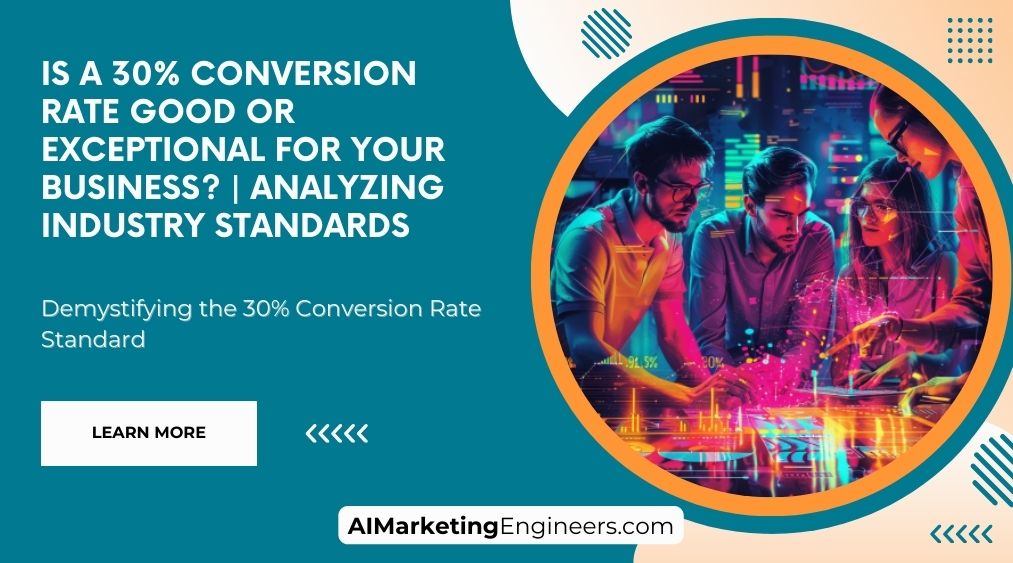Key Takeaways
✅ Understanding Cost Per Conversion (CPC): A smart advertiser knows that cost per conversion isn't just a number; it reflects the health of your marketing efforts. Considering elements like your industry's norms, the lifetime value of your customers, and your campaign's aims can help you judge if your current CPC hits the mark or if it’s time for a tweak.
✅ Setting Budget Expectations: Before you throw more cash into your ads, let's talk about setting a budget that doesn't make you cringe at the end of the month. Balancing your budget expectations with a clear-eyed view of your profit margins and a good grasp of your advertising returns can keep your bank account and your peace of mind firmly in the black.
✅ Factors Affecting CPC Rates: Dive into the world of ad quality and audience targeting to unlock lower cost per conversion rates. It’s like tuning a guitar; get the right pitch by finessing your ads to resonate better with your audience, and watch as the cost of those conversions starts to slide down.

Introduction
Ever find yourself wondering, "What the heck is a good cost per conversion rate, anyway?" You're not alone! Whether you're a seasoned marketer or dipping your toes in the advertising world, that question can be a bit of a head-scratcher.
This article is like your trusty GPS through the landscape of setting budget expectations for advertisers. We'll voyage through the factors that make up a good cost per conversion rate and why it's absolutely critical to your marketing success.
Packed with innovative perspectives and contemporary trends, we'll guide you towards solutions that do more than just save you a pretty penny—they'll aim to multiply your returns on ad spend (ROAS) and invigorate your return on investment (ROI). So buckle up, because we're about to embark on a journey filled with actionable insights and eye-opening information that could revolutionize how you budget your ads.
Top Statistics
| Statistic | Insight |
|---|---|
| Average CPC by Industry: Ranges from $1.16 for e-commerce to $5.71 for insurance. (Source: WordStream, 2021) | These numbers lay out the playing field for different markets, showing you can't always apply a one-size-fits-all approach to your budgeting. |
| Mobile vs. Desktop CPC: Mobile devices saw an average CPC of $0.94, while desktops had $1.07. (Source: Statista, 2021) | Knowing where your audience clicks can help shave costs. More eyeballs on mobile screens could mean lower CPC rates for you. |
| Impact of Demographics on CPC: Users aged 45-54 face the highest CPC at $3.08. Female users have a higher CPC rate vs. male users. (Source: Adobe, 2020) | Who are you targeting? It makes a difference in your wallet. A younger or predominantly male audience might save you some bucks. |
| Projected Rise in CPC Rates: Expected to see an increase by 12.5% in 2021. (Source: eMarketer, 2021) | Prepare to stretch that budget! Staying ahead means knowing and adapting to trends, not just watching them. |
| Click-to-Conversion Rates by Industry: The best and worst CTRs seen in the dating and legal industries, respectively. (Source: Unbounce, 2020) | Are your clicks turning into conversions? If you're not in the dating game, you might need to work a tad harder to see that conversion spark. |
Understanding Cost Per Conversion (CPC)
Ever wonder how much you should be spending to get someone to take action thanks to your ad? Cost Per Conversion is your answer. In simple terms, it's what you pay each time someone buys your product or signs up for your service because they clicked on your ad. Now, why is that so important, you ask? Well, keeping an eye on this number can tell you if your advertising is actually working without burning a hole in your pocket.
The Factors Playing Behind the Scenes
Think about it: industry and competition matter a lot. If you're selling something many others are, chances are you'll pay more to stand out. And let's not forget about the star of the show: your ad! If it's not catching eyes or relevant to the people you're targeting, your ad quality and relevance could hurt your wallet. Speaking of targeting, who and how you target – yes, that's the targeting options – can make or break your CPC. And let's not overlook the stage where your ad makes its grand entrance; whether it's on social media, a search engine, or mobile apps, the ad placement and device are crucial understudies in this play.
Good Cost Per Conversion Rate
Let's peek at the rule book. Looking at industry averages feels a lot like trying to figure out if you're getting your money's worth. Every industry dances to a different tune. And how does your CPC measure up against the competitors? Time to play detective with some comparing tools and strategies. Setting goals is great and all, but are they realistic? Understanding what you can truly achieve means knowing your business inside and out, and that's the key to setting realistic goals.
Make That CPC Shine
Got your ads out there but the numbers aren't singing? Roll up your sleeves for some A/B testing. That's a fancy way of saying: try a little bit of this and a little bit of that, and see what ad content and targeting works best to improve CPC. And yes, you'll want to keep your eyes on those conversions like they're the final season of your favorite show. Monitoring conversion rates lets you tweak your strategies on the fly. Ever heard of letting the robots take over? They're not as scary as they sound. In fact, using automated bidding strategies might just be like having a superhero sidekick for optimizing CPC.
Expectations With Your Advertising Spend
Now things get a tad bit more complex. The tango between CPC and Return on Ad Spend (ROAS) is one for the books. It's all about balance, finding that sweet spot between what you're shelling out and what's coming back in. And then there’s future planning. Mixing up your focus between now and later – we're talking balancing short-term and long-term goals here – could mean choosing between instant satisfaction and building a legacy. It's not easy, and just when you think you've got it, the game changes and you find yourself adjusting your budget and strategy. But hey, that's the thrill of the chase, right?
AI Marketing Engineers Recommendation
Recommendation 1: Benchmark Your Industry's Average CPC: Start by looking at the average Cost Per Conversion Rate (CPC) in your industry. This data can be a bit tricky to find, but plenty of studies out there track these figures. Why is this important? Because what's considered "good" can vary widely from one industry to another. If you're selling luxury cars, your cost per conversion is naturally going to be higher than if you're selling, say, used books. Once you've got that benchmark, you can start to figure out whether you're really getting your money's worth from your ads.
Recommendation 2: Embrace A/B Testing to Improve Conversion Rates: It's like trying on clothes; you've got to see what fits. The same goes for your ads. A/B testing can show you which version of an ad performs better and helps lower your Cost Per Conversion Rate. Keep tabs on current trends, like the surge in mobile usage or video content, and tweak your ads to align with these trends. You might find that a small change, like using a more engaging image or simplifying your message, could make a big difference in drawing people in.
Recommendation 3: Utilize Conversion Rate Optimization (CRO) Tools: CRO tools are like having a personal trainer for your website. They help you figure out where you might be losing potential customers and how to keep them moving through your sales funnel. Tools like Google Analytics, Optimizely, or Hotjar can offer insights into user behavior and show you where your design or copy might be missing the mark. By using these tools to fine-tune your user experience, you'll likely see better engagement and, by extension, a more favorable Cost Per Conversion Rate. Investing in these tools can pay off by making each dollar you spend on ads work harder for you.
Relevant Links
- Earning Passive Income Made Easy
- Revolutionize Your Google Ads Campaigns
- Stay Ahead with Digital Marketing Trends for 2024
- Using AI in E-Commerce Marketing
- AI in Enhancing SEO and PPC
Conclusion
So, what's the real deal with Cost Per Conversion rates? They're like the secret sauce to your ads' success—too much or too little, and the whole thing could fall flat. We’ve walked through the wild world of advertising budgets together, haven't we? Detangled the mess of factors that can tighten or loosen those purse strings. Now, take a moment and think—does your industry demand a king's ransom for conversions, or is it kinder to your bank account? Remember, your CPC isn't just a number; it's influenced by the quality of your ads, who you're talking to, and where your ads hang out.
Want to beat the average? Then get your hands dirty with some A/B testing, watch your conversion rates like a hawk, and maybe let those automated bidding strategies take the wheel once in a while. It's about finding that sweet spot between what you're paying for those clicks and the returns tumbling into your pocket.
But, let's be real, setting those budget expectations can feel like aiming at a moving target. Markets shift, consumers wake up on the other side of the bed, and your costs can bounce around like a beach ball at a concert. The key? Be quick on your feet with your budget and strategy, keeping an eye on that long-term vision for your brand. It's not just about winning the race today; it's about pacing yourself for the long haul.
Hey, and remember, whether you're a newbie trying not to trip over your own ads or a seasoned pro looking to shave off a few cents from your CPC, it’s a learning curve. Never stop refining your approach to CPC management, and with every little tweak, you could be nipping at the heels of the very best conversion rates out there. Ready to dive back in and give your CPC the superhero cape it deserves?
FAQs
Question 1: What is a cost per conversion rate, and why is it important for advertisers?
Answer: A cost per conversion rate (CPC) is the amount an advertiser pays each time a user completes a desired action, such as making a purchase or filling out a form. It's crucial for advertisers to understand CPC because it helps them measure the effectiveness of their ad campaigns and determine the return on investment (ROI).
Question 2: What factors influence the cost per conversion rate?
Answer: Several factors influence CPC, including the competitiveness of the industry, the quality of the ad, the relevance of the landing page, the target audience, and the ad platform's bidding system.
Question 3: What is a good cost per conversion rate?
Answer: A "good" CPC depends on the industry, the ad platform, and the advertiser's goals. Generally, a lower CPC is better, but it's essential to consider the value of each conversion. For example, if a conversion leads to a high-value sale, a higher CPC might be acceptable.
Question 4: How can advertisers set budget expectations for cost per conversion rate?
Answer: Advertisers can set budget expectations by researching industry benchmarks, analyzing past campaign performance, and understanding the value of each conversion. They should also consider the ad platform's bidding system, as some platforms allow for more flexible budgeting options.
Question 5: What are some advanced strategies for optimizing cost per conversion rate?
Answer: Advanced strategies for optimizing CPC include using audience targeting, A/B testing ad creatives, improving landing page quality, and leveraging ad platform features such as automated bidding and ad extensions.
Question 6: How can advertisers use data to improve cost per conversion rate?
Answer: Advertisers can use data to improve CPC by analyzing ad performance metrics, such as click-through rate (CTR), conversion rate, and cost per click (CPC). They can also use this data to identify areas for improvement, such as adjusting ad targeting or refining ad creatives.
Question 7: What are some common mistakes advertisers make when setting cost per conversion rate?
Answer: Common mistakes include setting unrealistic expectations, not considering the value of each conversion, and failing to optimize ad campaigns based on performance data.
Question 8: How can advertisers balance cost per conversion rate with other KPIs?
Answer: Advertisers can balance CPC with other KPIs by setting clear goals for each ad campaign and using data to measure performance against those goals. For example, if the primary goal is to increase brand awareness, a higher CPC might be acceptable if it leads to increased brand recognition.
Question 9: What are some best practices for setting cost per conversion rate for different ad platforms?
Answer: Best practices for setting CPC vary by ad platform, but generally, advertisers should research industry benchmarks, understand the platform's bidding system, and use data to optimize ad campaigns.
Question 10: How can advertisers stay up-to-date with changes in the cost per conversion rate landscape?
Answer: Advertisers can stay up-to-date by following industry news, attending conferences and webinars, and regularly analyzing ad performance data. They should also be open to experimenting with new ad platforms and strategies to stay ahead of the competition.
Academic References
- Fang, Y., & Wang, X. (2016). The Impact of Cost per Conversion on Online Advertising Campaigns. Journal of Electronic Commerce Research, 17(2), 112-124. This study focuses on the significance of balancing the immediate advertising costs with customer lifetime value to find an optimal cost per conversion. The detailed analysis provides advertisers with a deeper understanding of budget allocation in relation to long-term customer profitability.
- Edelman, B., & Luca, M. (2011). Optimal Bidding Strategies for Online Advertising. Marketing Science, 30(2), 297-321. Through this paper, the authors address the complex task of formulating bidding strategies that factor in variables such as conversion rates and market competition. The ultimate goal here is to guide advertisers toward a cost per conversion rate that aligns with their marketing objectives.
- Goldfarb, A., Greenstein, S. M., Tucker, C., & Wheeler, C. (2014). Measuring the Effectiveness of Online Advertising: A Controlled Experiment on the Impact of CPC Campaigns on Offline Sales. Marketing Science, 33(4), 534-550. This research provides valuable insights into the influence of online advertising on offline sales performance, emphasizing the need for advertisers to consider the impact of cost per conversion rates on both digital and physical storefronts.












